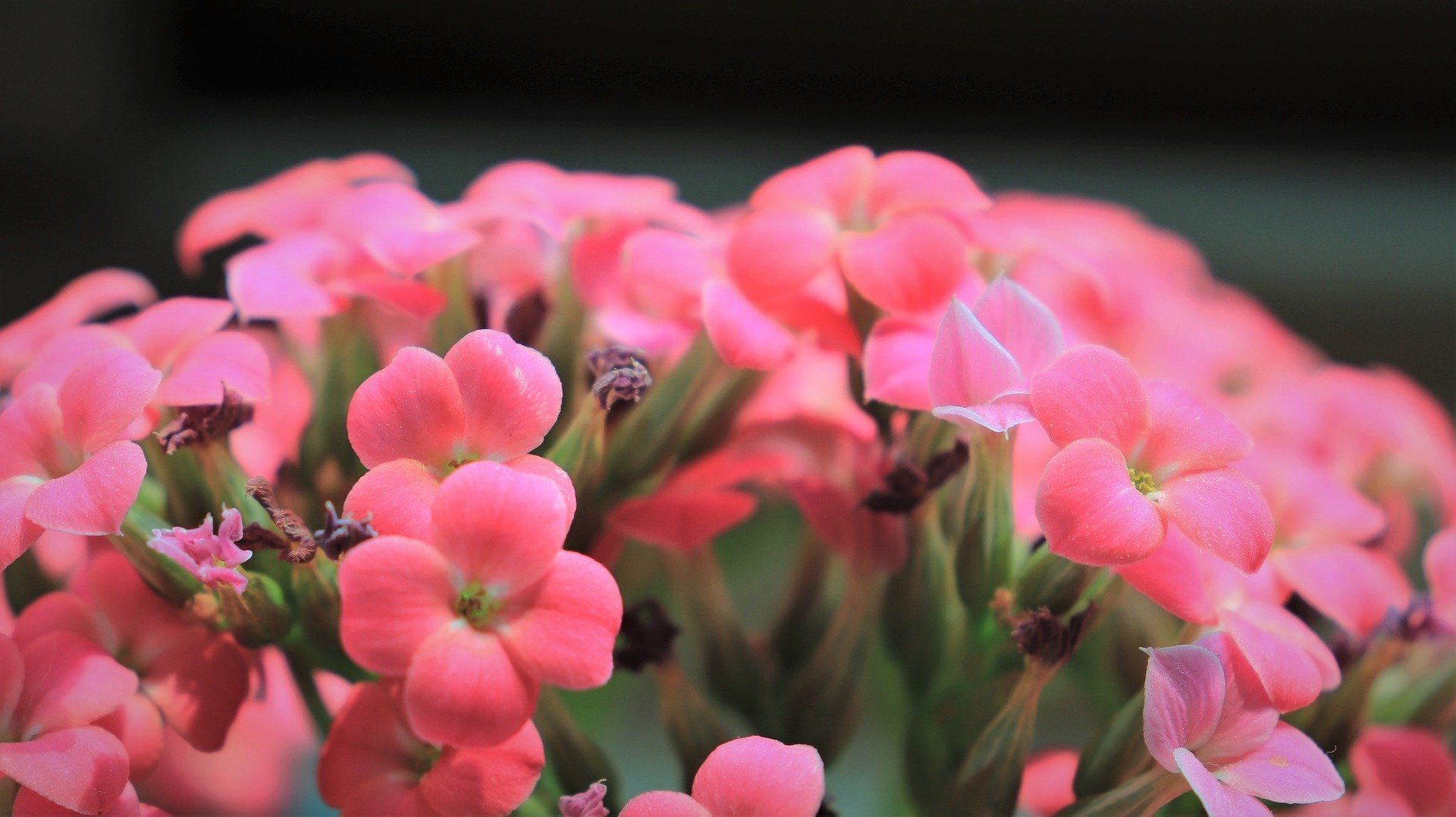The interesting history of the Kalanchoe
The Kalanchoe blossfeldiana also goes by the name Flammendes Käthchen Kalanchoe and is now the most popular flowering houseplant in Germany. The Kalanchoe belongs to the Succulent family.
With optimal Kalanchoe care, it will flower for six to eight weeks. The Kalanchoe belongs to the genus of succulents and is therefore comparatively undemanding. It comes from the tropical parts of Asia and Africa and is also very widespread in Madagascar.
There are now 125 known Kalanchoe species. This exotic beauty first came to Europe in the 1930s. There it was cultivated by the German seed dealer Robert Blossfeld and this is how the name Kalanchoe blossfeldiana came about.
The different types of Kalanchoe
Not only is it known for its enormous range of colors and growth forms, but also for its incredibly easy maintenance. It is particularly suitable for very sunny window sills and balconies.
There are many different types of Kalanchoe, here is a brief overview:
Kalanchoe marmorata: Bushy, approx. 50cm tall succulent with shiny fleshy leaves. These are blue-grey in color and have large brown spots with serrated edges.
Kalanchoe beharensis: A magnificent foliage plant also known as Elephant Ear Kalanchoe. It has 30cm long dark green leaves, wavy at the edges and covered with dense fine hairs.
Kalanchoe tomentosa: Pretty foliage plant with loose rosettes. It has oval leaves on a woody stem. It can grow up to 45cm tall. The leaves are covered with fine, bristly, and mostly silvery hairs.
Kalanchoe blossfeldiana: This is the typical flowering plant that is available in different colors. The leaves are thick, fleshy, and dark green.

The right location for your Kalanchoe
The perfect location for your Kalanchoe is a sunny or bright place. However, you should first get used to the blazing midday sun.
Too much sun usually manifests itself with a reddish discoloration and curling of the leaves. In summer the Kalanchoe needs warm temperatures around 20 degrees Celsius - 25 degrees Celsius. This is how you guarantee perfect and particularly long blooms.
Kalanchoe care: It's that easy!
Caring for the Kalanchoe is extremely simple. Depending on the species, it can have yellow, orange, white, pink, pink or red flowers. The main flowering period is between February and July.
You need this soil for your Kalanchoe
Normal potting soil from the garden center is usually not ideal for Kalanchoe care. Mix your potting soil 50:50 with succulent soil. As a result, the roots are sufficiently aerated and excess water runs off faster.
How much water does your Kalanchoe need
During the growth and flowering period, you should ensure that the soil is sufficiently moist. A weekly watering is sufficient. Don't water them until the top layer of soil is completely dry.
Tip: If you do your Kalanchoe care outside on the balcony, then you should postpone watering until morning and evening. If you water them in the blazing midday sun, their leaves can burn faster.
How often do you fertilize your Kalanchoe
You should fertilize your Kalanchoe between April and August. This is especially important if the plant has few flowers. When caring for the Kalanchoe, give some flower fertilizer every two to three weeks.
Tip: In summer you should only do this in the morning or evening.The plant can process the fertilizer better at this time
Do you have to cut the Kalanchoe?
You only have to cut back your Kalanchoe when it loses leaves in the lower area. Cut them only when they have faded and only cut them enough to leave a thickened area (also called an eye). Fresh green will sprout there again. Use clean and sharp scissors.
Kalanchoe repotting: When is the time?
You should repot your Kalanchoe in early spring. When the triangular leaves cover the entire bottom of the pot, it's time to repot.
As the Kalanchoe has a rather broad and shallow root system, you can plant it in shallow bowls. However, make sure that the pot has a water drain. After repotting, you do not have to fertilize the Kalanchoe for the first 6 months. You can find more about repotting here.
What is the best way to overwinter your Kalanchoe?
Unfortunately, caring for the Kalanchoe over the winter is a bit more difficult. Like the poinsettia, it is a short-day plant and is therefore rarely kept for more than a year.
Getting the Kalanchoe to bloom again after winter is not easy. The plants lose their shape after 2 years and the flowers become smaller and less colourful.
If you still don't want to give up your plant, then it should stand in the dark for at least 16 hours a day in winter (a maximum of 8 hours of light per day). Water them very little and don't fertilize them at all.
It's that easy to multiply your Kalanchoe
To propagate the Kalanchoe, you can either sow them or propagate them with cuttings. Sowing is very time-consuming and complicated. We therefore recommend propagation by cuttings.
Cut off the tips of shoots about ten centimeters long from the plant. Make sure you cut as cleanly and straight as possible. Wait until no more sap comes out of the shoot and then put them in pots with potting soil.
The perfect ambient temperature for the cuttings is 20-25°C. Keep the plants sufficiently moist. However, you should avoid waterlogging.

The Kalanchoe - nothing for house tigers
The Kalanchoe is non-toxic to us humans. The fleshy leaves contain malic acid and isocitric acid and are therefore toxic to cats.
Tips when your Kalanchoe is ill
If you water your Kalanchoe too often, its leaves will quickly turn brown and fall off. However, it is not too late to help her. Try draining them a bit and planting them in fresh soil. Don't water them for a week.
.



















Leave a comment